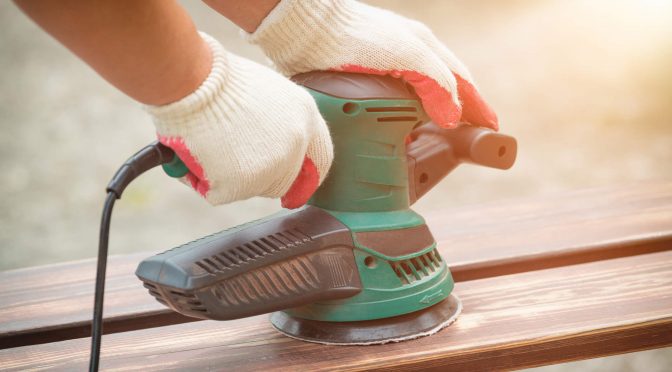Navigating the world of floor sanding mistakes is like steering through a maze – a wrong turn, and you’re facing uneven surfaces, scratched finishes or worse. Among the classics is a lack of proper preparation. Then comes the grit sequence, determining whether your floor ends up looking polished or worn out. Not sanding enough is a subtle misstep or on the flip side, over-sanding can thin out the floorboards unnecessarily. And let’s not forget the essential safety precautions. So, in the intricate job of floor sanding, let’s untangle these common sanding errors, ensuring your floors get the attention they deserve.
Insufficient Preparation
One of the most common errors in floor sanding is insufficient preparation. This includes not properly cleaning the floor surface before sanding. Dirt, dust and debris left on the floor can become trapped in the sandpaper, leading to uneven sanding and a poor finish.
A lack of preparation can result in a rough and uneven surface. The sanding machine may struggle to remove old finishes or imperfections, leading to an unfinished job. This can affect the quality and durability of the final finish.
Using Incorrect Grit Sequence
Another frequent mistake is starting the sanding process with the wrong grit of sandpaper. Using too coarse a grit initially can remove too much material, causing unnecessary wear on the floor. On the other hand, starting with too fine a grit may not effectively remove existing finishes or imperfections.
Using the wrong grit sequence can result in uneven surfaces, visible scratches or leave behind some of the old finish. It can also affect the adhesion of new finishes, compromising the lifespan and look of the floor.
Not Sanding Enough
Inadequate sanding is a common error where individuals may not sand the floor enough to remove all existing finishes, scratches or imperfections. This can lead to a less-than-smooth surface and affect the adherence of new finishes.
Not sanding enough can leave behind visible blemishes, scratches or remnants of old finishes. The new finish may not adhere properly, resulting in an uneven appearance and reduced durability of the floor.
Over-Sanding
On the flip side, over-sanding happens when excessive pressure or too many passes are made with the sanding machine. This can thin out the floorboards, reducing their overall thickness and potentially causing serious damage.
Over-sanding can lead to weakened floorboards, making them more susceptible to damage and reducing their lifespan. It can also create an uneven surface, affecting the look and finish of the floor.
Ignoring Safety Precautions
Neglecting safety is a serious mistake in floor sanding. This includes not using proper protective gear such as goggles, masks and ear protection. Also, inadequate ventilation can expose people to harmful dust and fumes.
Ignoring safety precautions can lead to health issues for people involved in the sanding process because of exposure to dust and fumes. Additionally, the lack of protective gear can result in injuries. Finally, inadequate ventilation may affect the quality of the finish as airborne particles settle on the drying finish.
Avoiding Mistakes: Preventative Measures and Best Practices
Here are some great floor sanding tips and best practices to sidestep the common mistakes when floor sanding and understand how to sand floors properly;
Conduct a Thorough Assessment:
Before diving into floor sanding, do a comprehensive assessment of the floor’s condition. Identify areas with existing finishes, scratches or imperfections so that you can give these the attention they need. This step helps in tailoring your approach to the specific requirements of your floor, ensuring a more effective sanding process.
Choose the Right Equipment and Materials:
Selecting the appropriate equipment and materials is crucial. Ensure you have the right sandpaper grits for your project, considering the current condition of the floor. It’s also important to choose a high-quality sanding machine suitable for the size of the job. Investing in quality tools will help with a smoother and more efficient sanding process.
Follow a Systematic Sanding Process:
Develop a systematic approach to the sanding process. Begin with a coarse grit to remove existing finishes and imperfections, gradually progressing to finer grits for a smoother finish. This methodical approach helps avoid using an incorrect grit sequence, making sure you get the best results and preserving the integrity of the floor.
Regularly Check the Floor’s Surface:
Throughout the sanding process, regularly stop to inspect the floor’s surface. This lets you identify any areas that may need additional attention or adjustments. Checking for evenness and smoothness makes sure that you address any issues as they come up, preventing the need for extensive rework or potential damage.
Get Professional Advice or Assistance:
Don’t hesitate to seek advice or help from a professional, especially if you come across challenges or things you weren’t expecting. Flooring professionals have the expertise to give you guidance on specific issues and can offer recommendations for getting the best results. In some cases, hiring a professional for the entire sanding process might be a wise investment, particularly for larger or more complex projects.
How Floor Sanders London Can Help
Revitalise your floors with precision and expertise and avoid those floor sanding mistakes. Floor Sanders London offers high quality floor sanding services tailored to your needs. Discover seamless flooring transformations – contact us today for a consultation and make your floors shine like never before.

